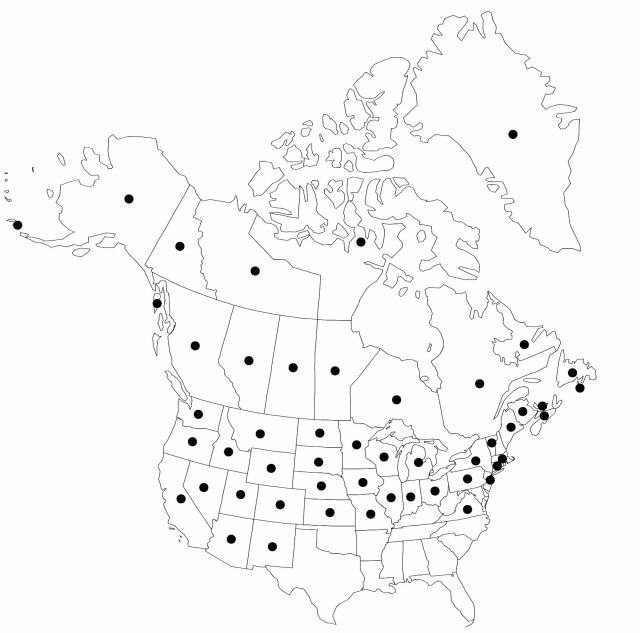Carex aquatilis
Kongl. Vetensk. Acad. Nya Handl. 24: 165. 1803.
Plants not cespitose. Culms 20–150 cm. Leaves: basal sheaths red-brown or brown; sheaths of proximal leaves glabrous, fronts with indistinct spots, veinless, apex U-shaped; blades usually amphi-stomic, papillose on both surfaces. Inflorescences: proximal bract longer than inflorescence. Spikes: erect; proximal 2–6 spikes pistillate; terminal (1–)2–4 spikes staminate. Pistillate scales red-brown to purple-brown, apex obtuse or acute, awnless. Perigynia ascending, veinless, somewhat flattened, loosely enclosing achenes, ellipsoid or obovoid, dull, apex obtuse or acute, papillose. Achenes not constricted, glossy. 2n = 72–80.
Distribution

North America, Europe.
Discussion
Varieties 4 (4 in the flora).
Carex aquatilis is circumboreal and variable; four extensively intergrading varieties are recognized in North America. The species is distinguished by amphistomic (epistomic in var. dives) papillose leaves, glabrous sheaths with a concave apex, perigynia that lack veins and are usually brown-spotted on the proximal half, and have glossy achenes.
Selected References
None.
Lower Taxa
Key
| 1 | Spikes pendent or the terminal erect; proximal peduncle to 11 cm; perigynia ellipsoid; beak purple-brown, 0.3–0.4 mm; culms scabrous on angles. | Carex aquatilis var. dives |
| 1 | Spikes erect; proximal peduncle not more than 4 cm; perigynia usually obovoid; beak pale or purple-brown, not more than 0.2 mm; culms glabrous or scabrous on angles. | > 2 |
| 2 | Pistillate scales pale brown with narrow red-brown margins and broad pale midvein. | Carex aquatilis var. substricta |
| 2 | Pistillate scales red- or purple-brown and narrow pale midvein. | > 3 |
| 3 | Perigynia pale brown; staminate spikes usually 2–4. | Carex aquatilis var. aquatilis |
| 3 | Perigynia purple-brown on apical 1/2; staminate spikes usually 1–2. | Carex aquatilis var. minor |